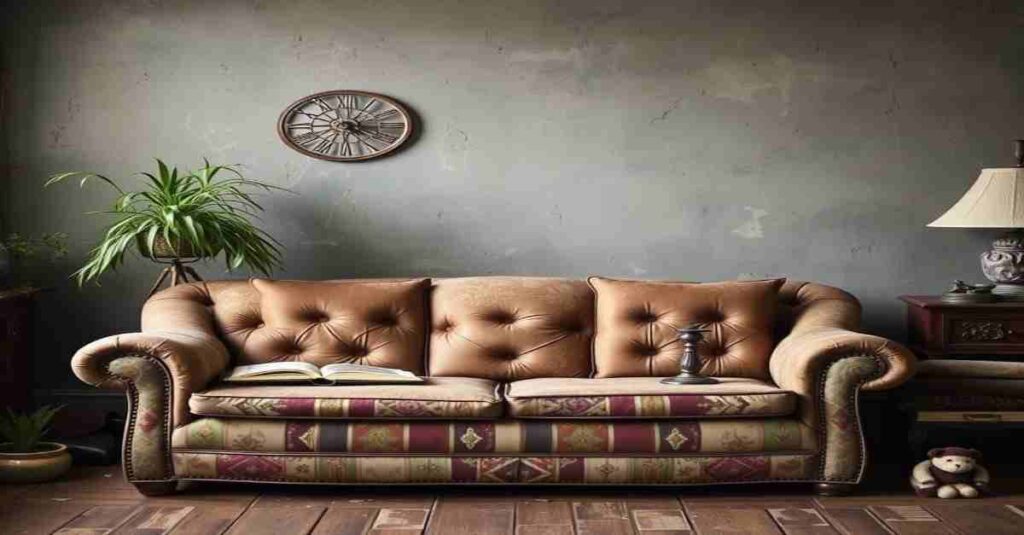Did you get old furniture that’s taking up space? Whether you’re downsizing, redecorating, or just decluttering, getting rid of old furniture can be daunting. But don’t worry-we’ve covered you with various methods and eco-friendly tips to make the process as smooth as possible. Here’s your ultimate guide to furniture disposal.
Methods of Furniture Disposal
1. Donating to Loca Charities or Thrift Stores
If your furniture is in good condition, consider donating it to local charities or thrift stores. Many organizations are happy to take gently used items off your hands, some even offer free pickup services.

2. Selling Through Online Marketplaces or Local Classifieds
Sell your furniture online to recoup some of the cost. Platforms like Craigslist, Facebook, Marketplace, and Offer Up allow you to reach potential buyers area. Make sure to include clear photos and detailed descriptions to attract buyers.
3.Arranging for Bulk Pickup With Local Waste Management Service
Many local waste management services offer bulk pickup for large items like furniture. Check your local ordinances for specific procedures and designated days for bulk item pickup. Be prepared to pay any associated fees.
4. Hiring a Professional Junk Removal Service
For a convenient and eco-friendly option, hire a professional junk removal service, Companies like 1-800-GOT-JUNK and junk king ensure that your furniture is disposed of responsibly, often recycling or donati9ng items when possible.
5.Upcycling or Repurposing the Furniture
Get creative and give your old furniture a new life. Upcycling projects can range from simple paint jobs to more complex transformations. Join local upcycling workshops or groups for inspiration and guidance.
Local Regulations and Guidelines
Before disposing of your furniture, it’s essential to check local regulations:

Local Ordinances: some areas require specific procedures for desposing of large items. Follow these guidelines to avoid fines.
Environmental Regulations: Certain materials, such as mattresses or electronics within furniture, may have specific disposal requirements. Ensure you comply with these regulations to minimize environmental impact.
Fees and Permits: Research if there are any fees or permits associated with using waste management services for furniture disposal.
Step-by-Step Guide for Furniture Disposal
Assess the condition:
Determine if the furniture is in good enough condition for donation, sale, or upcycling.
Research Local Rgulations:
Check local ordinances, environmental regulations, and waste management guidelines for furniture disposal in your area.
Choose the Disposal Method:
Donation: Look for local charities or thrift stores that accept fgurniture.
Sale: Explore online marketplaces or local classifieds.
Bulk Pickup: Arrange for a bulk pickup with your local waste management service.
Professional Junk Removal: Hire a convenient and eco-friendly junk removal service.
Upcycling or Rpurposing: Transform the furniture into something new.
Prepare for Disposal:
Clean and repair the furniture if needed before donating or selling.
Follow any specific instructions the chosen disposal method provides, such as disassembling large items for more accessible transport.

Execute the Plan:
Contact the choosen disposal method to schedule a pickup or drop-off, ensuring you comply with all local regulations and guidelines.
Review Eco-Friendly Options:
- Consider the environmental impact of your disposal method and look for ways to minimize waste and support sustainability.
- Keep Records:
- Retain any donation or sale receipts for tax purposes, and ensure you have documentation for any disposal services used.
- Reflect on the Experience:
- Evaluate the effectiveness and ease of your chosen disposal method and consider adjustments for future disposals.
Additional Eco-Friendly Tips for Furniture Disposal
- Repurpose Within Your Home: Consider using the furniture in a different room or for a different purpose.
- Give to Friends or Family: Someone you know might have a use for your old furniture.
- Join Upcycling Workshops: Learn new skills and transform your furniture into something unique.
- Disassemble for Recycling: Break down the furniture to make recycling more accessible and efficient.
- Donate to Sustainable Organizations: Choose charities firmly committed to recycling and sustainability.
- Highlight Eco-Friendliness When Selling: Appeal to buyers by emphasizing the environmental benefits of giving the furniture a second life.
- Consult Local Recycling Centers: Find out which furniture parts can be recycled and the best way.
Disposal Checklist
- Assess Condition:
- Suitability for donation, sale, or disposal.
- Research Regulations:
- Local ordinances, environmental guidelines, and waste management services.
- Choose Disposal Method:
- Donation, sale, bulk pickup, professional junk removal, or upcycling.
- Plan and Schedule:
- Ensure compliance with local regulations and prepare for disposal activities.
Local Resources for Furniture Disposal
- Local Charity and Thrift Stores:
- [List of stores that accept furniture donations]
- Online Marketplaces and Classifieds:
- Recommendations for popular platforms like Craigslist, Facebook Marketplace, and OfferUp.
- Waste Management Services:
- Contact details for local waste management services.
- Professional Junk Removal Services:
- List of eco-friendly and reputable services like 1-800-GOT-JUNK and Junk King.
- Upcycling Workshops and Groups:
- Information on local organizations focused on upcycling.
- Recycling Centers:
- List of centers that accept furniture for recycling.
- Local Ordinance Information:
- Contact details for local government or websites.
Infographic Key Points
- Assessment:
- Check furniture condition for donation, sale, or disposal.
- Research:
- Local regulations and waste management guidelines.
- Eco-Friendly Methods:
- Donating, selling, upcycling, or professional removal.
- Environmental Benefits:
- Highlight the impact and advantages of each method.
- Sustainability Tips:
- Disassembly, recyclable materials, and local resources.
- Community Involvement:
- Encourage eco-friendly practices and awareness.
By following this guide, you’ll dispose of your furniture responsibly and contribute positively to your community and the environment. Happy decluttering!











